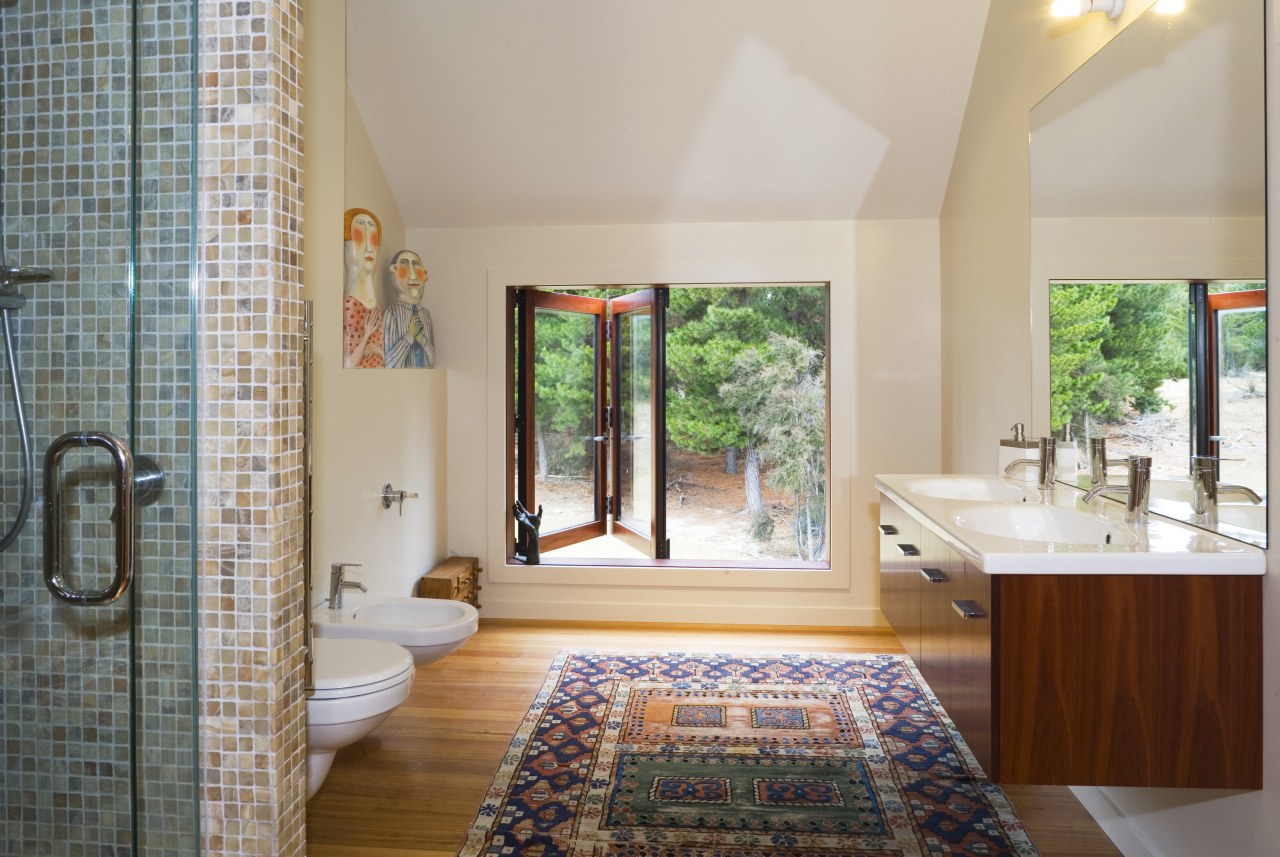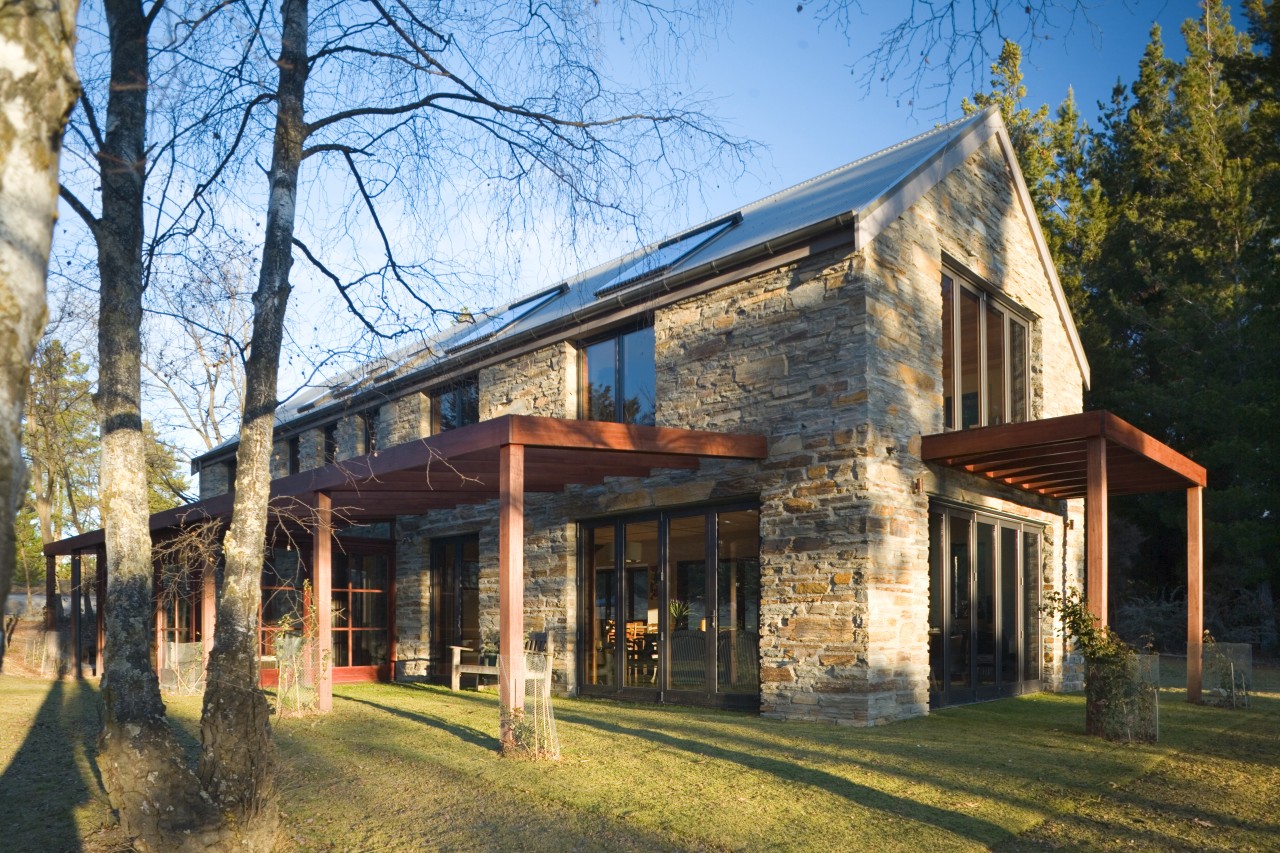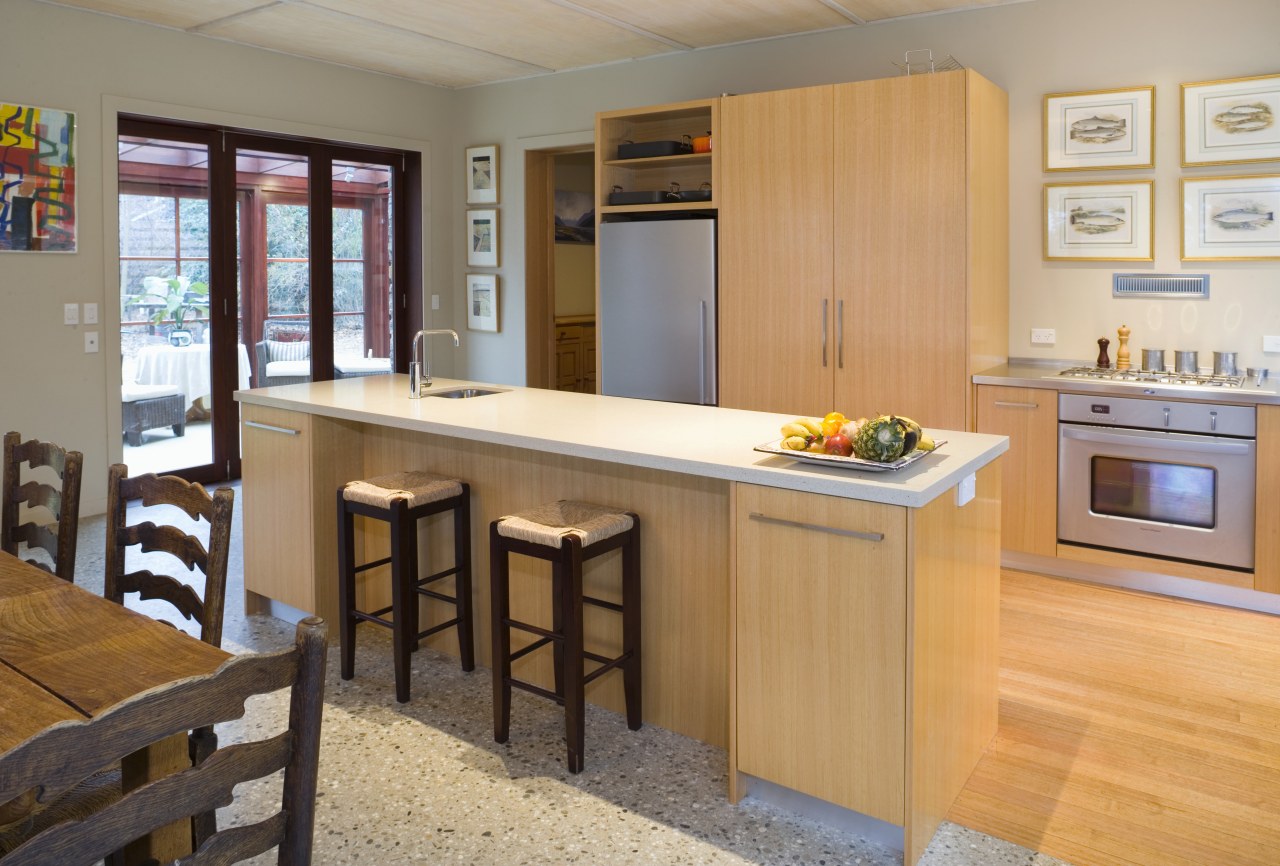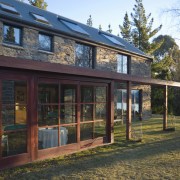Drawing from nature
Designed to find empathy with its surroundings, this family home also uses a number of energy-efficient elements to ensure comfort throughout the seasons

Building energy-efficient elements into a house needn't necessitate a design that looks like a modern-day windmill or a jumble of voltaic cells. A demure, even traditional-style residence can still have an energy-efficient, eco-friendly make-up at its heart.
This lakeside home by architect Anne Salmond is in keeping with its natural surroundings and neighbouring stone-built structures. The architect says family comfort and ease of upkeep were central to the design, and that energy efficiency and sustainability came a collective second.
"Local schist and Tasmanian oak are used on the exterior and work in well with the environment and adjacent buildings," Salmond says. "These materials are low maintenance, and timber, also used on the interior, is a renewable resource."
The house is simple in layout, with an open-plan living, dining and kitchen area at the northern, sunny end, and a bathroom and laundry at the cooler southern end. Upstairs there are three bedrooms and another bathroom.
On warm days, the expansive living area opens up to the scenery via bifold doors on three sides. Doors also open out into a spacious, light-filled conservatory and this space is key to controlling the house's temperature. The conservatory is walled and roofed in panes of double-glazed, argon-filled glass.

"The conservatory is at the heart of the house's energy efficiency," says Salmond. "It gains solar heat throughout the day, which is then vented, through the bifolds, into the open-plan living space.
"This heat transfer is most noticeable in the spring, when sunshine hours are increasing but outside temperatures are often still low."
Warm air from the conservatory rises up the stairwell, heating the upper floor. A pump also carries air from the sun-filled room to the south side of the home, warming the laundry and bathroom.
Where the schist wall meets the sliding doors on the conservatory's inner wall, the rock is left uninsulated. The schist in these areas absorbs heat from the conservatory, releasing it into the interior through the evening, much like an adobe house.
"All doors on the conservatory slide back either by a half or two thirds, allowing this room as well as the living area to be open to the outdoors," she says. "This means certain doors can be slid open or closed as need be, to block out prevailing winds."

The other main source of warmth for the lakeside residence is a heat pump, which powers the underfloor heating that runs through concrete floors in the breakfast bar, dining area and around the peripheries of the living space.
"To ensure the room had a comfortable feel we introduced a dance floor in Tasmanian oak at the centre of the living area," she says. "This timber, repeated on the kitchen floor, warms the space visually and helps maintains a comfortable temperature without added underfloor heating."
The home's orientation to the north, high-level insulation in the walls and ceilings, open fire, and solar roof panels to heat the water tanks are other energy-efficient factors. Roof-lights provide cross ventilation across the upper reaches of the interior when cooling rather than heating is required.
Story by: Trendsideas
Home kitchen bathroom commercial design







